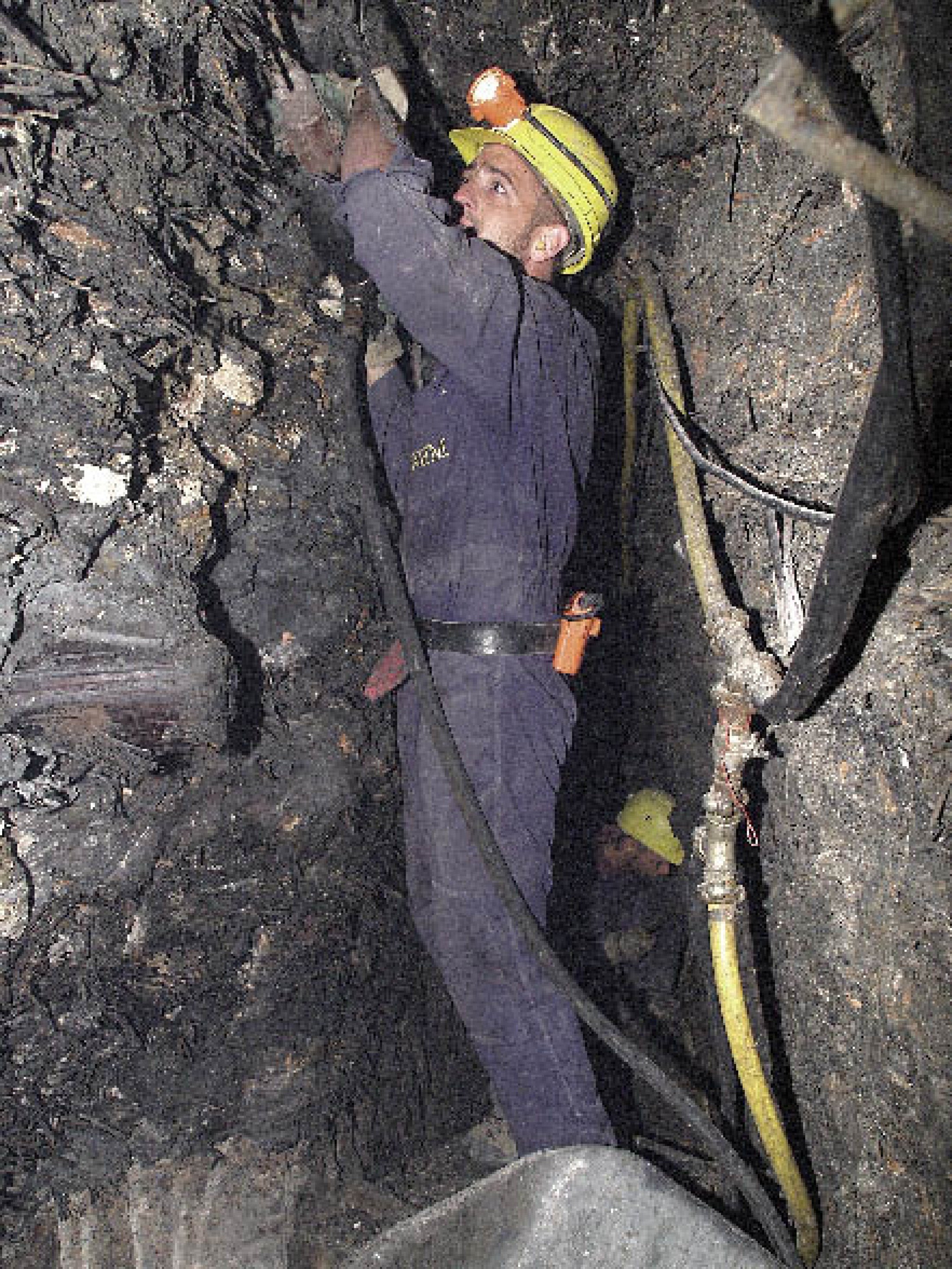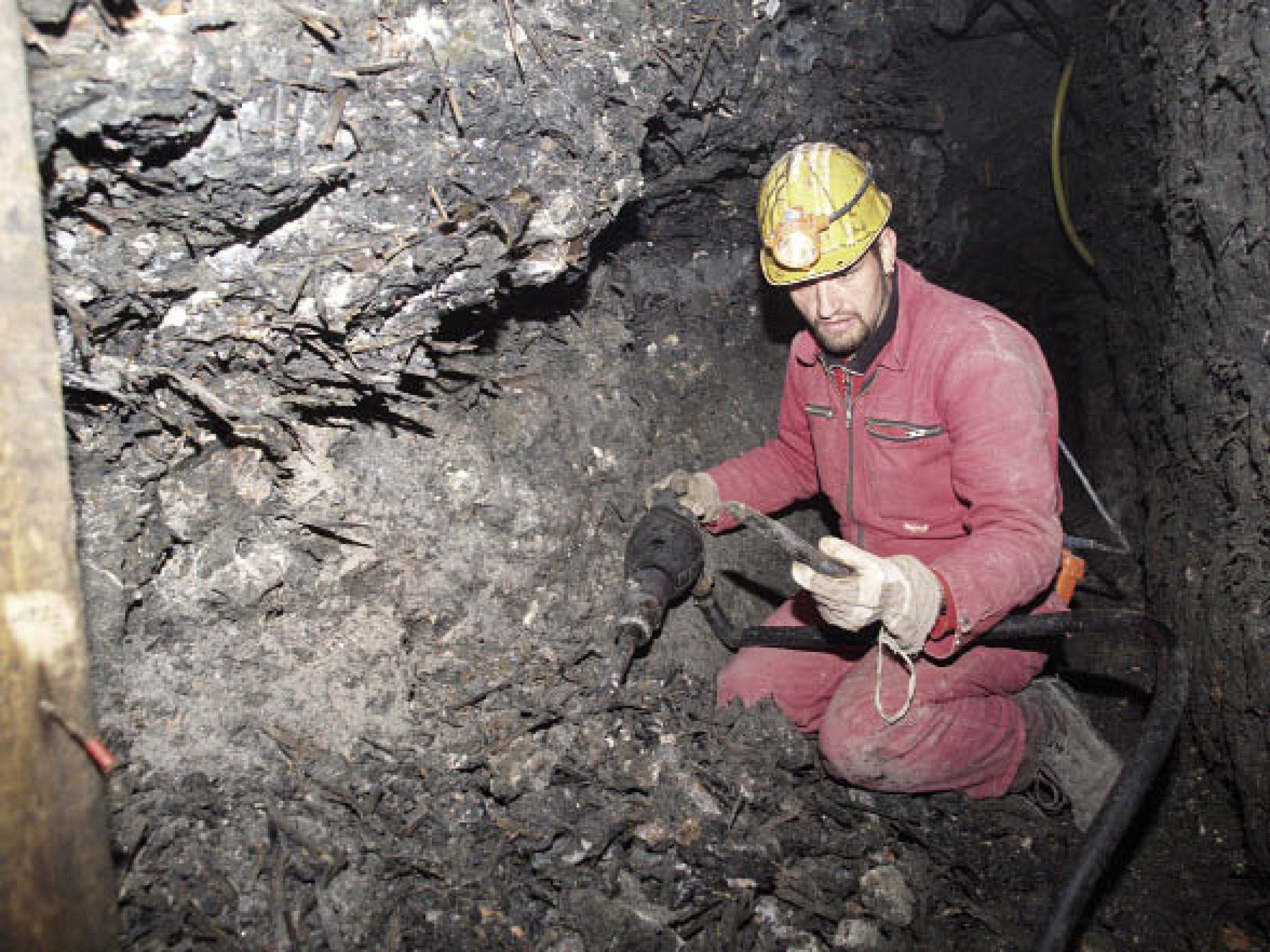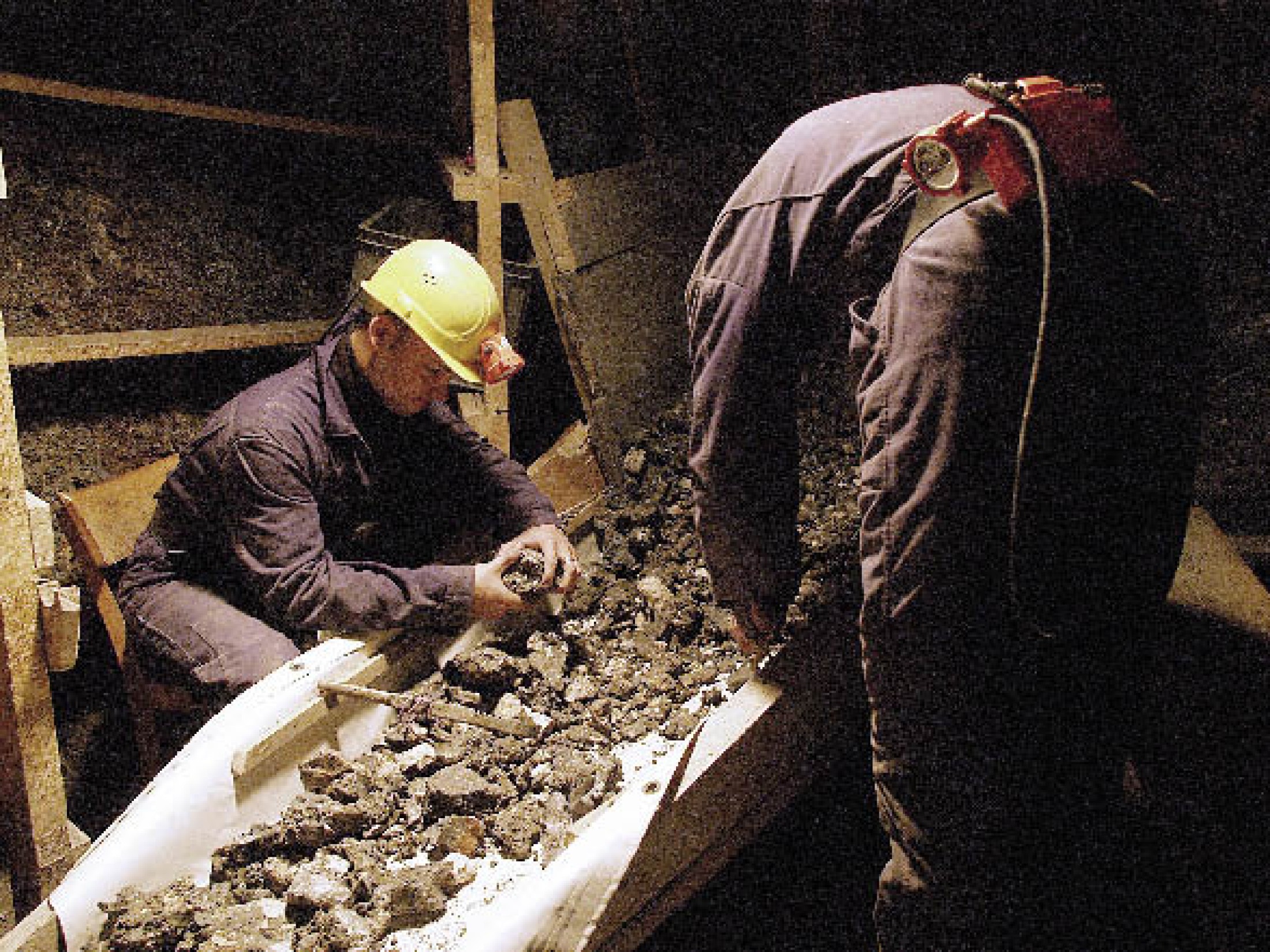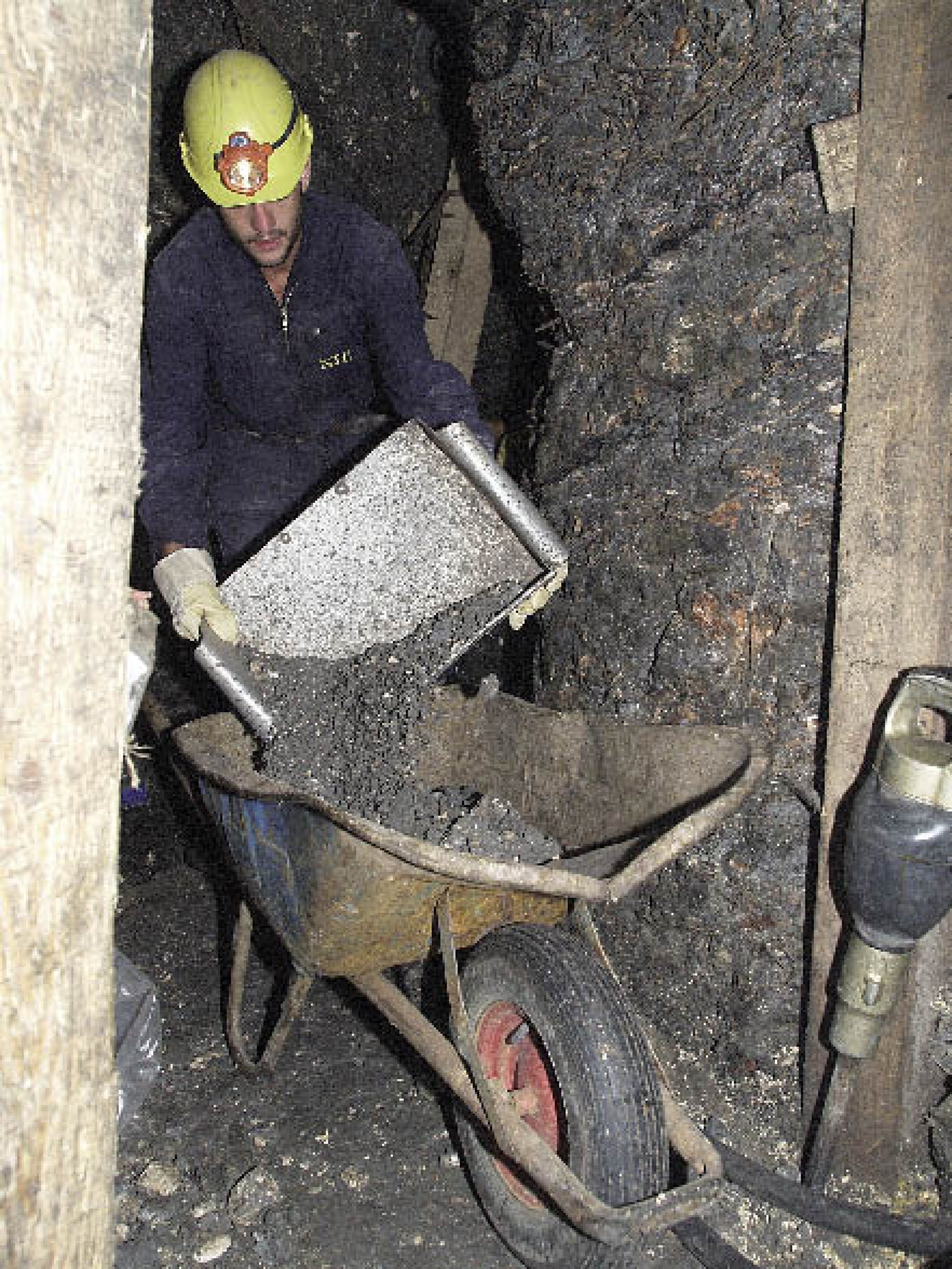Excavation methods in the salt mines
The rock of the Heidengebirge is so densely compressed that finds contained in it can only be extracted using a pneumatic drill. These lumps of rock are taken to the ‘living room’, an area within the mine where archaeologists can sort through the material and identify items of interest. Finds are then transported to the NHM Vienna’s documentation center on the surface, where they are washed and desalinated before being transported to Vienna.Excavation work with a pneumatic drill
Processing the finds
Excavation work with a pneumatic drill
From an archaeological point of view, a mine is an unusual site that will require specific methods adapted to the very special conditions. In contrast to surface excavation, only small areas and narrow tunnels can be opened because of the high rock pressure. Larger spaces would have to be planked, and the support structures would again cover the archaeological findings. We thus have to infer the overall picture from tiny details.Rock pressure has compressed the Heidengebirge, the prehistoric mining waste, back to solid rock. It consists of 99% spent tapers, salt, clay and gypsum, and is ‘excavated’ or rather worked by pneumatic drills. The worked material is taken to the so-called ‘living-room’ and examined for prehistoric finds. Fragile items, such as cords and fragments of fur, leather or textile are kept moist, stabilized, freed from salts with demineralised water and then gently dried. If a large object is discovered in the course of advance heading or salt mining, it has to be numbered, recorded in its precise position in the sediment, photographed and entered into the protocol of finds. It is only then that it can be removed from the Heidengebirge.
Processing the finds
Eventually, the finds are taken to the surface, where most of them are cleaned in water and partly desalinated. In order to answer specific archaeological questions, exact replicas of these finds are made on site in the Salzbergtal valley by members of the NHM team. Once they have been removed, cleaned and stabilized, they are taken to the museum in Vienna. But this is not the end of the story. The finds have to be cleaned again, restored, inventoried and stored such as to be available for scientific analysis or exhibition.(Kowarik, K. – Reschreiter, H. – Loew, C.)





